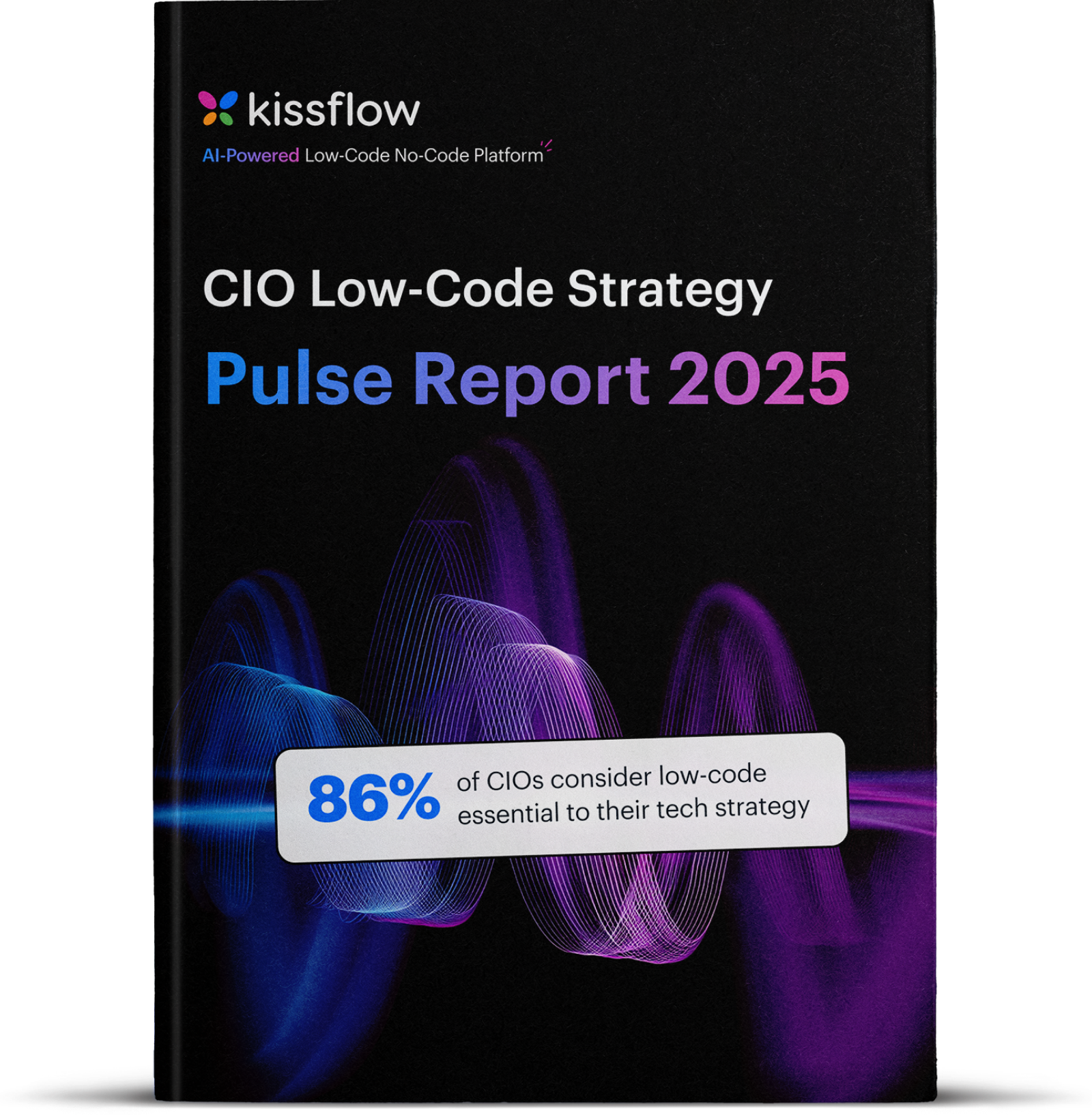
- >
- Retail>
- Automating influencer and affiliate collaboration for D2C brands
Automating Influencer and Affiliate Collaboration for D2C Brands: Enhancing Efficiency and Scalability
Why influencer and affiliate management needs a strategic rethink
Think about the last major system upgrade you championed in your organization. Maybe it was migrating to cloud infrastructure or implementing a new ERP system. You probably spent months analyzing inefficiencies, calculating ROI, and building consensus around the need for change. Imagine if one critical business function remained stuck in the spreadsheet era while everything else ran on modern, automated systems. That's exactly what's happening with creator partnerships in most D2C companies today.
While your engineering teams have built sophisticated systems for inventory management, customer data platforms, and financial reporting, creator partnerships often rely on manual processes that would make you cringe in any other part of your business. We're talking about email chains for approvals, spreadsheet-based commission calculations, and manual contract reviews that create the same operational drag you eliminated everywhere else years ago.
Here's a number that might surprise you: if your marketing team manages 500 creator partnerships, and each partnership involves an average of 12 touchpoints throughout its lifecycle—from initial outreach through final payment—you're looking at 6,000 individual interactions that need coordination and tracking. Without systematic automation, this operational complexity grows exponentially with scale, creating unacceptable bottlenecks in any other mission-critical business process.
The creator economy as enterprise infrastructure
The numbers tell a compelling story about where this market is heading. The creator economy jumped from $24 billion in 2024 to a projected $33 billion in 2025[1] for influencer marketing platforms alone. Even more telling: 86 percent[2] of US marketers plan to partner with influencers in 2025, up dramatically from 70 percent in 2021 for companies with over 100 employees. This isn't a marketing experiment anymore—it's become core business infrastructure that requires the same systematic approach you'd apply to any other critical enterprise function.
What makes this particularly interesting from a technology perspective is how creator partnerships fundamentally differ from traditional advertising channels. Instead of interrupting user experiences like banner ads or pre-roll videos, these partnerships integrate seamlessly into the content people want to consume. This creates incredible opportunities for authentic customer engagement but also introduces complex operational challenges that demand sophisticated D2C partnership management coordination mechanisms to execute effectively at scale.
From a systems perspective, each creator functions as an independent marketing node requiring orchestration across multiple platforms, content formats, and performance characteristics. D2C influencer automation has become critical infrastructure because manual coordination cannot scale to meet market demands, similar to how CRM evolved from spreadsheets to sophisticated platforms.
The technical debt of manual processes
Creator partnership management creates classic integration challenges spanning legal, finance, marketing, and analytics teams. Without proper automation, information silos develop between departments, leading to inconsistent data, delayed decision-making, and suboptimal resource allocation. The manual handoffs create bottlenecks that limit your ability to capitalize on time-sensitive opportunities while accumulating technical debt through fragmented spreadsheets and ad-hoc tracking systems.
“Providers differentiate with capabilities for new use cases such as influencer marketing and task automation using AI-powered workflows.”
— Kelsey Chickering, Principal Analyst in Social Suites Mature With New AI Workflows And Expanded Use Cases, (Forrester)
Core challenges limiting D2C collaboration scale
Distributed system complexity
Creator partnerships mirror the multi-cloud environment challenges your teams manage daily. Creators operate across Instagram (preferred by 57 percent[3] of brands), TikTok (52 percent), YouTube (37 percent), Facebook (28 percent), and LinkedIn (12 percent), each with distinct technical requirements and API limitations. This platform fragmentation creates complex D2C partnership management challenges as brands must aggregate and normalize data from these disparate sources while maintaining real-time visibility into partnership performance.
The scalability challenge intensifies when viral content triggers dozens of partnership inquiries within hours. Without proper automation infrastructure, these opportunities often exceed manual processing capacity, causing organizations to miss time-sensitive revenue opportunities systematically.
Manual bottlenecks and opportunity costs
Manual partnership management creates the same inefficiencies that characterized pre-digital business processes. When approvals require email workflows, verification depends on manual review, and payments rely on spreadsheet calculations, your organization operates with legacy system disadvantages.
The opportunity cost extends beyond efficiency concerns, particularly when considering budget allocation patterns where 26 percent[4] of marketing agencies and brands allocate more than 40 percent of their budgets to influencer partnerships. Viral trends typically span days rather than weeks, and when partnership activation requires two weeks, organizations systematically miss market opportunities while more agile competitors capture emerging trends and market share. This becomes particularly costly given that 65 percent of influencers want early involvement in creative processes and product development rather than following rigid briefs, requiring responsive D2C partnership management systems that adapt quickly to collaborative requirements.
Visibility gaps and information asymmetries
Lack of real-time partnership visibility creates information asymmetries that damage operational efficiency and relationship quality. Without centralized monitoring, teams operate with incomplete information about performance, payment status, and relationship health, mirroring challenges organizations face without proper application performance monitoring.
Manual management creates dark data problems, where valuable insights remain trapped in individual systems rather than contributing to systematic optimization. This fragmentation makes operational excellence a strategic imperative, given the network effects of negative experiences quickly spreading through creator communities.
Automation architecture opportunities
Intelligent onboarding systems
Modern affiliate marketing automation software implements sophisticated decision trees to evaluate potential partners using multiple data sources and predefined criteria. These systems analyze creator metrics, audience demographics, and content quality within minutes rather than manual processes that require days or weeks.
Multi-stage validation pipelines verify credentials, assess audience authenticity using machine learning, and evaluate content quality through automated analysis. The system intelligently routes edge cases to human reviewers while automatically processing straightforward applications, maintaining consistent standards while dramatically reducing processing time.
Rule-based payment automation
Payment automation addresses both efficiency and relationship quality simultaneously. Sophisticated creator economy tools implement rule-based systems handling complex commission structures, milestone payments, and performance bonuses without manual calculation or approval processes.
Technical implementation requires careful business logic consideration and exception handling. Systems must accommodate percentage-based commissions, flat-rate payments, performance multipliers, and promotional adjustments while maintaining accuracy and auditability. Advanced implementations integrate with existing financial systems, ensuring automated payments align with accounting and compliance requirements.
Unified visibility platforms
Performance marketing automation platforms aggregate data from social media platforms, e-commerce systems, CRM tools, and financial systems, providing comprehensive partnership performance visibility. Dashboard architecture accommodates different user roles, with marketing teams requiring real-time analytics, finance needing payment tracking, legal monitoring compliance, and executives requiring performance summaries.
Advanced analytics identify patterns informing strategic decision-making about partnership optimization, including creator categories generating the highest ROI, optimal commission structures, and partnerships most likely to achieve sustained success based on historical performance data.
Low-code scalability advantages
Low-code architecture addresses operational agility while minimizing development resource consumption and technical debt creation. Marketing and operations teams can build, modify, and optimize workflows without extensive development support, reducing total cost of ownership while maintaining adaptation flexibility.
Automated workflows handle increasing partnership volumes without proportional infrastructure increases, enabling efficient scaling while maintaining consistent service quality. This aligns with cloud-native principles that technology leaders prioritize for mission-critical systems.
Kissflow's enterprise automation approach
Comprehensive onboarding architecture
Kissflow's integration of electronic signatures with automated identity verification creates seamless experiences, maintaining security and compliance standards. Workflow orchestration enables complex, multi-stage processes, accommodating varying partnership requirements while maintaining consistent security standards.
High-value partnerships can require additional verification, legal review, or executive approval, while standard partnerships process automatically using predefined criteria. Audit trail capabilities ensure proper documentation supporting compliance requirements and enabling continuous optimization.
Advanced payment workflow management
Payment automation extends beyond transaction processing to sophisticated business logic implementation and exception handling. Multi-stage approval workflows accommodate complex organizational requirements while maintaining efficiency for routine transactions, meeting established criteria.
Intelligent flagging routes unusual scenarios to appropriate reviewers while automatically processing standard payments. Integration with existing financial systems ensures alignment with accounting, compliance, and reporting requirements without creating data silos.
Strategic dashboard capabilities
Comprehensive visibility enables effective system monitoring and optimization. The platform tracks critical operational metrics, including processing times, error rates, satisfaction indicators, and performance characteristics, enabling proactive management and continuous improvement.
Role-based access controls and configurable alerts enable proactive critical event management while maintaining operational efficiency. Advanced analytics identify trends informing strategic decisions about optimization, resource allocation, and technology investment priorities.
Integration-first architecture
Rather than requiring system replacement, Kissflow complements existing creator economy tools and marketing technology stacks. Integration with platforms like Impact and Refersion focuses on operational workflow optimization rather than duplicating functionality, minimizing operational disruption while adding powerful automation capabilities.
Strategic business outcomes
Operational transformation metrics
Organizations implementing comprehensive D2C influencer automation achieve 60-80 percent of onboarding time reductions while improving consistency and quality of partner experience. This acceleration enables capitalizing on time-sensitive opportunities and maintaining competitive advantages in rapidly moving digital markets.
Improved efficiency creates compound benefits throughout partnership lifecycles. Faster onboarding reduces opportunity costs, improved consistency enhances satisfaction and retention, and automated processes free human resources for strategic activities directly contributing to revenue growth.
Financial and relationship optimization
Automated payment systems eliminate calculation errors and processing delays while building trust relationships, enhancing partner loyalty, and reducing relationship management overhead. Satisfied creators become program advocates, attracting additional high-quality partners through recommendations and reducing acquisition costs.
Automated governance ensures consistent partnership standards and compliance requirements regardless of scale, providing foundations for sustainable growth while maintaining risk management and operational consistency that enterprise organizations require.
Conclusion: Strategic automation imperative
The competitive positioning case
The strategic imperative for comprehensive D2C influencer automation extends beyond operational efficiency to encompass competitive positioning, risk management, and growth enablement. Organizations maintaining manual partnership processes operate with pre-digital disadvantages in rapidly evolving creator economy landscapes.
Creator economy evolution accelerates continuously with new platforms, content formats, and partnership models emerging regularly. Manual processes lack the agility to adapt quickly while maintaining operational consistency and quality standards, creating systematic competitive disadvantages.
Technology leadership alignment
For technology leaders evaluating partnership automation solutions, platforms like Kissflow provide comprehensive capabilities, integration flexibility, and scalability characteristics that enterprise environments require. Low-code architecture addresses operational agility while minimizing development resource consumption and technical debt creation.
Implementation of intelligent automation in retail industries enables organizations to focus human resources on strategic relationship development while ensuring operational processes scale efficiently and reliably. This approach aligns with broader digital transformation initiatives that prioritize routine process automation to enable humans to focus on high-value strategic activities that directly contribute to competitive advantage and revenue growth.
Stop losing revenue to manual partnership processes
Frequently Asked Questions: D2C Influencer Automation
1. How can AI streamline influencer collaboration for D2C brands?
AI acts like a smart assistant that handles the repetitive, data-heavy tasks in influencer management. It excels at analyzing potential partners by examining their audience quality, engagement patterns, and content alignment with your brand in minutes rather than hours. This automated scoring helps your team focus on the highest-potential partnerships instead of manually reviewing hundreds of applications.
Beyond initial screening, AI optimizes ongoing collaborations by predicting the best posting times, suggesting content themes based on historical performance, and monitoring partnership health through engagement metrics. This transforms influencer management from reactive problem-solving to proactive relationship optimization.
2. What automation tools help track affiliate marketing campaigns?
Affiliate marketing automation software like Impact, ShareASale, and Refersion uses advanced tracking technology to follow customer journeys from initial click through final purchase. These platforms provide real-time dashboards showing which affiliates drive the highest-quality traffic and best conversion rates, enabling immediate optimization decisions.
The real power lies in automated commission management. These tools calculate complex payment structures, process payments automatically, and detect fraud patterns without manual oversight. They also integrate with your existing e-commerce and analytics platforms, creating a unified view of how affiliate partnerships contribute to overall business performance.
3. How do brands automate contract management for influencers?
Contract automation starts with template-based generation, where legal teams create approved templates for standard partnership scenarios. The system then populates these templates with specific details like compensation rates and deliverables based on the influencer's profile and campaign parameters.
Electronic signature integration handles the entire execution process digitally, routing contracts through multi-stage approval workflows involving marketing, legal, and finance teams. Advanced systems also manage renewals automatically, sending alerts when contracts near expiration and streamlining the renewal process for successful partnerships.
4. How can AI-driven workflows enhance influencer engagement?
AI-driven workflows enhance engagement by personalizing communication and optimizing interaction timing. The system analyzes when individual influencers respond most to outreach and automatically schedules follow-ups accordingly. It can customize messaging based on each creator's communication preferences and past interaction patterns.
For ongoing partnerships, AI monitors engagement quality by analyzing content performance, audience response, and brand mention sentiment. When engagement drops below established thresholds, the system triggers automated check-ins or suggests optimization strategies. This proactive approach maintains strong relationships and prevents partnership deterioration before it impacts results.
5. What are effective strategies for automating affiliate partnerships?
Effective affiliate partnership automation starts with clear segmentation. Categorize partners by performance tiers, audience size, and content types to create automated workflows tailored to each segment. Top performers might receive priority support and expedited payments, while new partners enter structured onboarding sequences.
Implement rule-based automation for common scenarios such as commission adjustments based on performance milestones, automatic approval for partners meeting specific criteria, and triggered communications for important partnership events. Most importantly, use performance data to continuously refine these automated processes, ensuring they evolve with your program's growth and changing market conditions.
Related Articles











